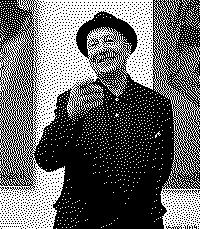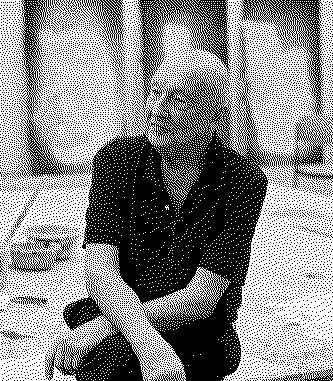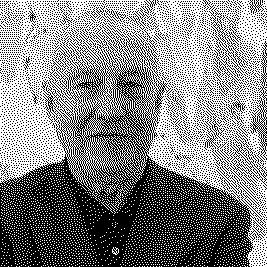Artists/Georg Baselitz
Fast Facts
Inverted Images:
Baselitz is most famous for his striking technique of presenting his subjects upside down. This approach, which he started using in the late 1960s, is intended to emphasize the artifice of painting and to challenge viewers' perceptions.
Neo-Expressionism
He is often associated with the Neo-Expressionist movement, characterized by intense subjectivity and raw, emotional expression. His work frequently features bold colors and dramatic, gestural brushstrokes.
Themes of Identity and History
Baselitz's art often explores themes related to German identity and history, particularly the country's post-World War II context. His works sometimes include references to his own experiences growing up in East Germany.
Pioneering Wood Sculptures
In addition to painting, Baselitz is also known for his sculptural work, particularly his innovative use of wood. His sculptures often feature rough-hewn, expressive forms and continue his exploration of inverted motifs.
Biography



Georg Baselitz, born Hans-Georg Kern on January 23, 1938, in Deutschbaselitz, Saxony, Germany, is a pivotal figure in postwar European art, recognized for his contributions as a painter, printmaker, and sculptor.
Utilizing readily available materials such as styrofoam, carpet, and cast polyurethane, he delves into the underlying concepts of art creation and viewer interaction.
Since 2005, Stingel has focused on painting photorealistic portraits of himself and others, capturing intricate details and the essence of human emotion and landscapes. His series of self-portraits, notably "Untitled (After Sam)" (2005–06), based on photographs by American photographer Sam Samore, mark a significant phase in his career, showcasing Stingel's ability to merge photorealism with conceptual art practices (Gagosian).
Stingel's work has been exhibited at major art venues worldwide, reflecting his status as a significant figure in contemporary art. His participation in the Venice Biennales in 1999 and 2003, and a mid-career retrospective organized by the Museum of Contemporary Art, Chicago, and the Whitney Museum of American Art, New York, in 2007, highlight his influence and recognition in the art world. This retrospective featured an aluminum-faced installation and invited the public to interact by scratching messages and images into the soft walls, exemplifying Stingel's interest in audience engagement and the ephemeral nature of art (Wikipedia).
His art has also achieved remarkable success in the market, with his prices skyrocketing following his 2007 show at the Whitney Museum. Notably, one of his Styrofoam boards fetched $1.9 million at auction, and his work "Untitled (for Sam)" set an auction high for the artist at $10,551,500 at Christie's Post-War and Contemporary Art Evening Sale in 2017 (Wikipedia).
In 2008, Stingel received second place for Best Monographic Museum Show Nationally by the U.S. Art Critics Association for the 2006–07 season, underscoring his critical acclaim and the impactful nature of his exhibitions (Wikipedia).
Through his explorations of materiality, process, and the viewer's role in art, Rudolf Stingel continues to expand the boundaries of contemporary art, making significant contributions to the discourse on art and its place in society.
Importance
Georg Baselitz's importance in the art world is multifaceted and profound, spanning several decades of influence and innovation.
Pioneering Neo-Expressionism
Baselitz is a pioneering figure in Neo-Expressionism, a movement that emerged in the late 20th century as a reaction against abstract art, focusing instead on expressive, figurative work. His art, characterized by its emotional intensity and often unsettling imagery, has played a crucial role in the development and recognition of this movement (Encyclopedia Britannica).
Innovative Use of Inversion
Perhaps Baselitz's most notable contribution to art is his technique of painting subjects upside down. This approach, which he began in 1969, was not merely a visual trick but a profound statement on the nature of painting, perception, and representation. By inverting his subjects, Baselitz shifts the focus from the subject matter to the painting's surface, form, and color, challenging viewers to engage with the work in a new and more abstract manner (Wikipedia) (Encyclopedia Britannica).
Engagement with German Identity
Baselitz's work deeply engages with German history and identity, particularly the country's experience during and after World War II. His paintings often reflect on the trauma, guilt, and complexity of German national identity, making him an important figure in postwar German art (The Art Story) (Encyclopedia Britannica).
Diverse Artistic Output
While Baselitz is best known for his paintings, his work spans a variety of mediums, including printmaking, sculpture, and drawing. His etchings and woodcuts, as well as his sculptures, are held in high regard for their raw, expressive quality and have significantly contributed to his reputation as a versatile and innovative artist (Wikipedia) (The Art Story).
Influence and Legacy
Baselitz's influence extends beyond his own oeuvre. His unique style, themes, and methodologies have influenced a wide range of artists, especially those associated with the Neo-Expressionist movement. His exploration of identity, history, and the very act of painting continues to inspire artists around the world (The Art Story).
Technique
Georg Baselitz has developed a distinctive approach to art-making that reflects his innovative spirit and desire to challenge traditional perceptions of painting and sculpture.
Inversion of Subjects
A signature method Baselitz employed starting in 1969 is the inversion of his painting subjects, aiming to focus attention on the artifice of painting and the formal aspects of his work rather than the representational content. This approach disrupts conventional viewing patterns, compelling viewers to engage with the painting's surface, colors, and composition rather than the depicted subjects (The Museum of Modern Art).
Expressive Use of Materials
Baselitz is known for his expressive and often aggressive manipulation of paint and materials. He employs a vigorous, gestural style that emphasizes the physicality of his media. Whether in painting, printmaking, or sculpture, Baselitz's work is marked by a raw, visceral quality that conveys intense emotion and power (Wikipedia) (The Art Story).
Figurative Imagery with Distorted Proportions
Especially in his early works from the 1960s, Baselitz concentrated on archetypal figures like heroes, rebels, and shepherds, often depicting them with distorted proportions and exaggerated anatomical structures. This technique reflects his interest in exploring the human condition and the psychological depths of his subjects (The Art Story).
Interest in Non-Western Art and Folk Traditions
Baselitz's approach to sculpture and his overall artistic philosophy have been significantly influenced by African sculpture and other non-Western art forms. He appreciates these traditions for their spontaneity and expression of human emotion, which he seeks to emulate in his own sculptures. This interest is evident in the primitivizing tendency of his works and his use of wood as a primary material (The Art Story).
Combination of Motifs and Techniques
Throughout the 1970s and 1980s, Baselitz experimented with combining various motifs and techniques, such as diptychs and tempera painting, as well as engaging with different materials and formats in his sculptures. This period saw him expanding his artistic vocabulary and exploring new ways of expression, further solidifying his position as a leading figure in contemporary art (Wikipedia).











